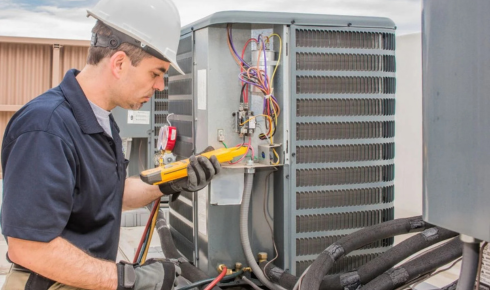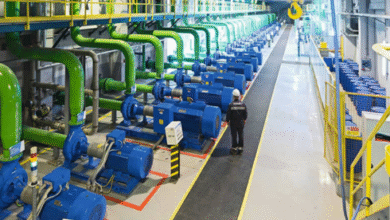The Subtle Art of Staying Cool: What Most People Don’t Realize About Their AC and Airflow

There’s something quietly magical about the hum of an air conditioner on a blazing summer day. It’s not dramatic or flashy, but it’s dependable — that comforting background sound that says, “Don’t worry, I’ve got this.” Until, of course, it doesn’t.
That moment when your once-perfectly chilled air turns lukewarm is like a betrayal. You stand there, adjusting the thermostat like it’s a mood ring, hoping somehow that’ll fix things. Spoiler: it rarely does. But before you assume the worst — like a full-blown breakdown — it helps to understand a few truths about how your AC works, how airflow plays into comfort, and what happens when it doesn’t.
When Cool Air Turns Complicated
Most people don’t think about their air conditioner until it’s already struggling. Maybe it’s blowing warm air, making odd noises, or cycling on and off without doing much cooling. The culprit could be anything — from a simple clogged filter to a refrigerant leak.
The good news? Many of these issues are fixable if you act early. The bad news? Ignoring them usually leads to bigger problems (and bigger bills). That’s where a reliable ac repair service comes in handy — someone who doesn’t just replace parts but actually takes the time to understand what’s wrong.
The key is not waiting until the system completely quits on you. Air conditioners often whisper their troubles before they scream. You just have to listen — a little extra noise, a longer cooling cycle, air that feels off. Those are all hints it’s time to get your system checked before it turns into a sweltering emergency.
The Invisible World of Airflow
Here’s a fact that surprises people: most AC problems aren’t caused by the air conditioner itself but by poor airflow.
Airflow is the unsung hero of cooling — it determines how efficiently your system distributes air throughout your home. Too little airflow, and your AC has to work overtime. Too much, and it might cool unevenly, creating hot and cold zones that feel frustratingly inconsistent.
The science behind this comes down to something called hvac cfm per square foot, a measurement that helps technicians determine how much air your system should move based on your home’s size and design. In simple terms, it’s how much air (measured in cubic feet per minute, or CFM) is needed to cool each square foot of your space.
Most homes fall within a standard range — usually 1 CFM for every 1–1.5 square feet. But if your ducts are too small, blocked, or leaking, that balance gets thrown off. The result? Your system starts to strain, running longer to reach the same temperature and costing you more in energy bills.
It’s like trying to drink a milkshake through a coffee stirrer — the effort’s there, but the flow just isn’t right.
Why Airflow and Comfort Go Hand in Hand
Think about the last time you walked into a room that felt “off.” Maybe it wasn’t hot, but the air felt heavy or still. That’s airflow imbalance. Proper airflow does more than keep temperatures even — it also helps maintain humidity, remove allergens, and keep the air feeling light.
When air isn’t circulating properly, dust and moisture settle. You’ll notice things like condensation on vents, stale smells, or that one room that never quite feels right.
A good HVAC system is all about harmony — balancing air pressure, duct size, and blower speed to create consistent comfort. And when something disrupts that balance, even the most powerful air conditioner can feel weak.
The Human Side of AC Maintenance
There’s something oddly personal about home comfort. Your air conditioner works quietly in the background every single day, rarely asking for attention until it’s had enough. And when it finally gives up, it’s easy to panic.
But here’s the thing: most breakdowns are preventable. Regular maintenance — cleaning coils, changing filters, checking refrigerant levels — can extend the life of your unit by years.
It’s not glamorous, but neither is waking up in the middle of the night sweating through your sheets. And this is where finding a trustworthy ac repair company really makes a difference.
Not the kind that upsells you on unnecessary parts or rushes through a job, but one that treats your system with care — testing airflow, measuring duct pressure, and explaining things in plain English. A good technician is like a mechanic and a teacher rolled into one. They’ll fix what’s broken, sure, but they’ll also help you understand how to prevent it next time.
Common Airflow Mistakes Homeowners Make
You don’t have to be an HVAC expert to avoid some of the most common issues that wreck airflow and efficiency. Here are a few that happen more often than you’d think:
- Closing vents in unused rooms: Seems logical, right? Less space to cool. But in reality, it creates back pressure in your ducts, forcing your system to work harder.
- Neglecting air filters: Dirty filters are like clogged arteries — they choke your system. Change them every 1–3 months depending on usage.
- Ignoring duct leaks: Even small leaks can waste up to 30% of conditioned air. That’s like throwing money straight out your window.
- Blocking returns: Furniture or curtains over air returns reduce circulation. Keep them clear to let your system breathe.
These might sound minor, but when combined, they can significantly affect comfort, performance, and lifespan.
What Technicians Really Check
When a professional comes out for maintenance or repairs, they don’t just pop the cover and poke around. They measure airflow, static pressure, refrigerant charge, and electrical components — all of which affect system balance.
They might use specialized tools to check if your system meets ideal hvac cfm per square foot standards. If it’s off, they’ll know whether to adjust fan speed, recommend duct modifications, or clean coils that are slowing airflow.
It’s not just about making your home colder — it’s about restoring equilibrium. Because when your AC is tuned right, it doesn’t just cool faster; it cools smarter.
The Energy Connection
Efficient airflow isn’t just about comfort; it’s about energy savings. When your system is balanced, it cools more effectively, meaning shorter run times and less wear on components.
In fact, studies show that even minor airflow corrections can cut energy consumption by up to 20%. Over a summer, that’s the difference between a forgettable electric bill and one that makes your eyebrows raise.
The same principle applies in winter — heating systems rely on balanced airflow just as much as cooling ones do. Good circulation is year-round comfort.
Wrapping It All Up
Your air conditioner isn’t just a box that blows cold air; it’s part of a delicate ecosystem that depends on airflow, design, and balance. Understanding that relationship is the key to real, lasting comfort.
So the next time your AC feels off, don’t just assume it’s dying — it might just be struggling to breathe. A simple tune-up, airflow adjustment, or duct inspection could be all it takes to bring it back to life.
And if you do find yourself calling for ac repair, take a moment to appreciate how much that system does for you. It’s not just about temperature — it’s about comfort, health, and peace of mind.




